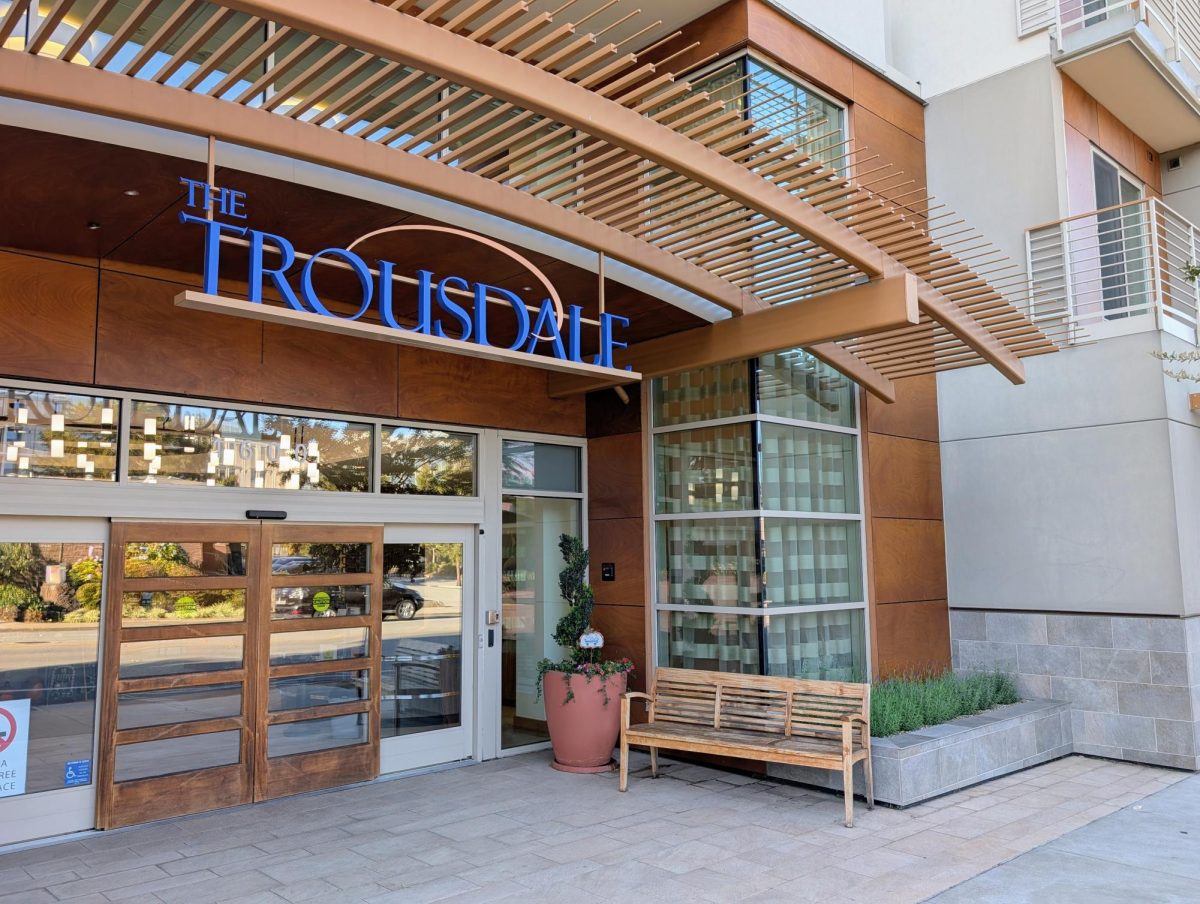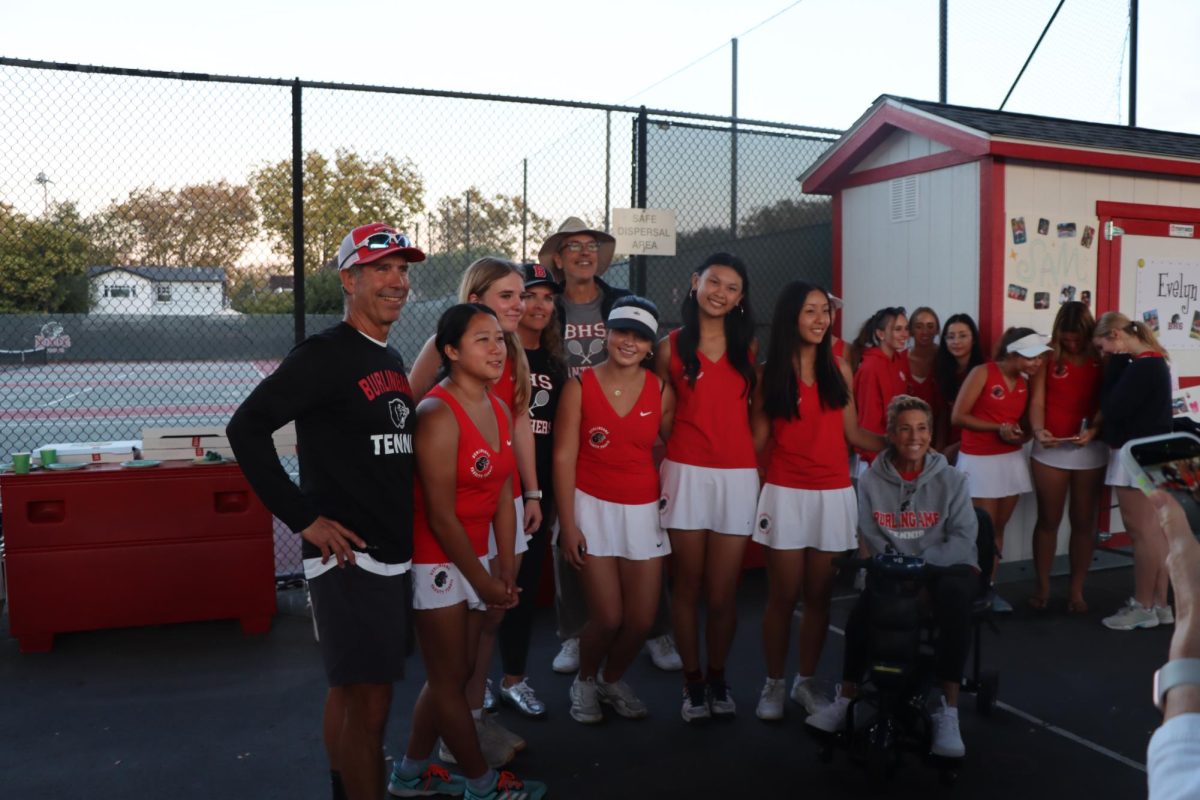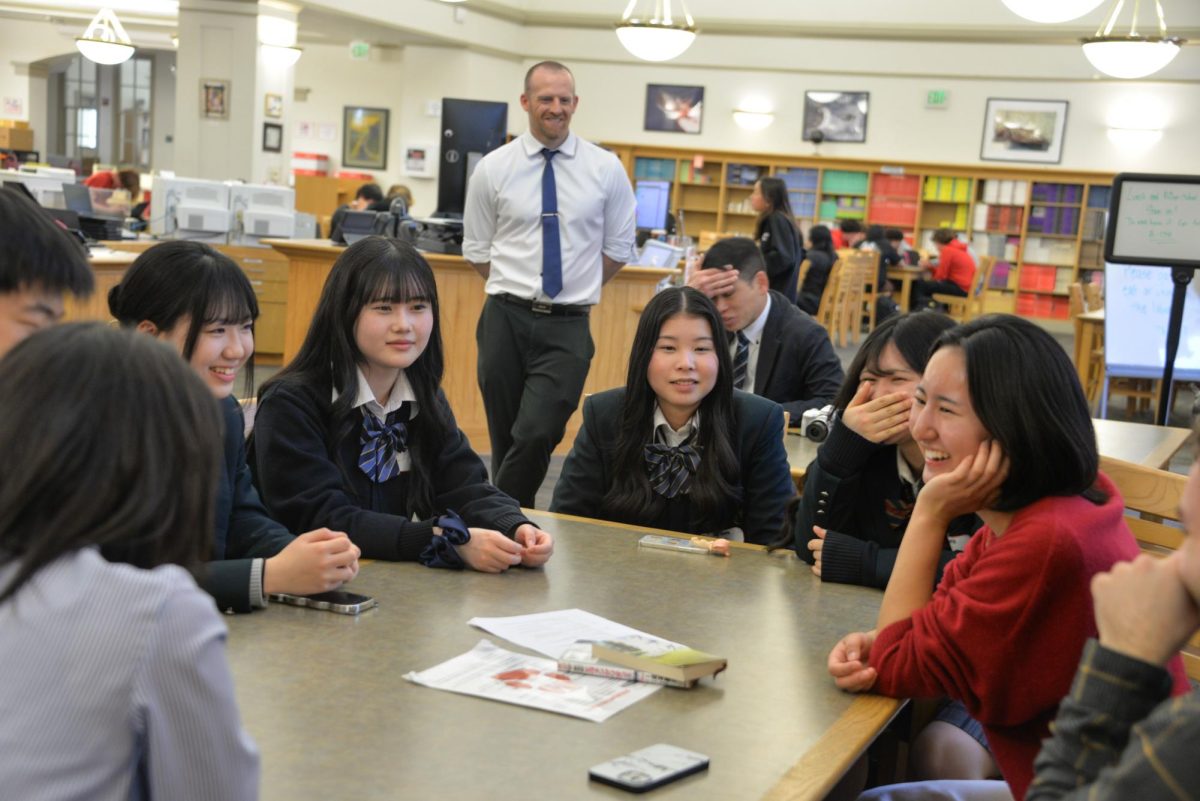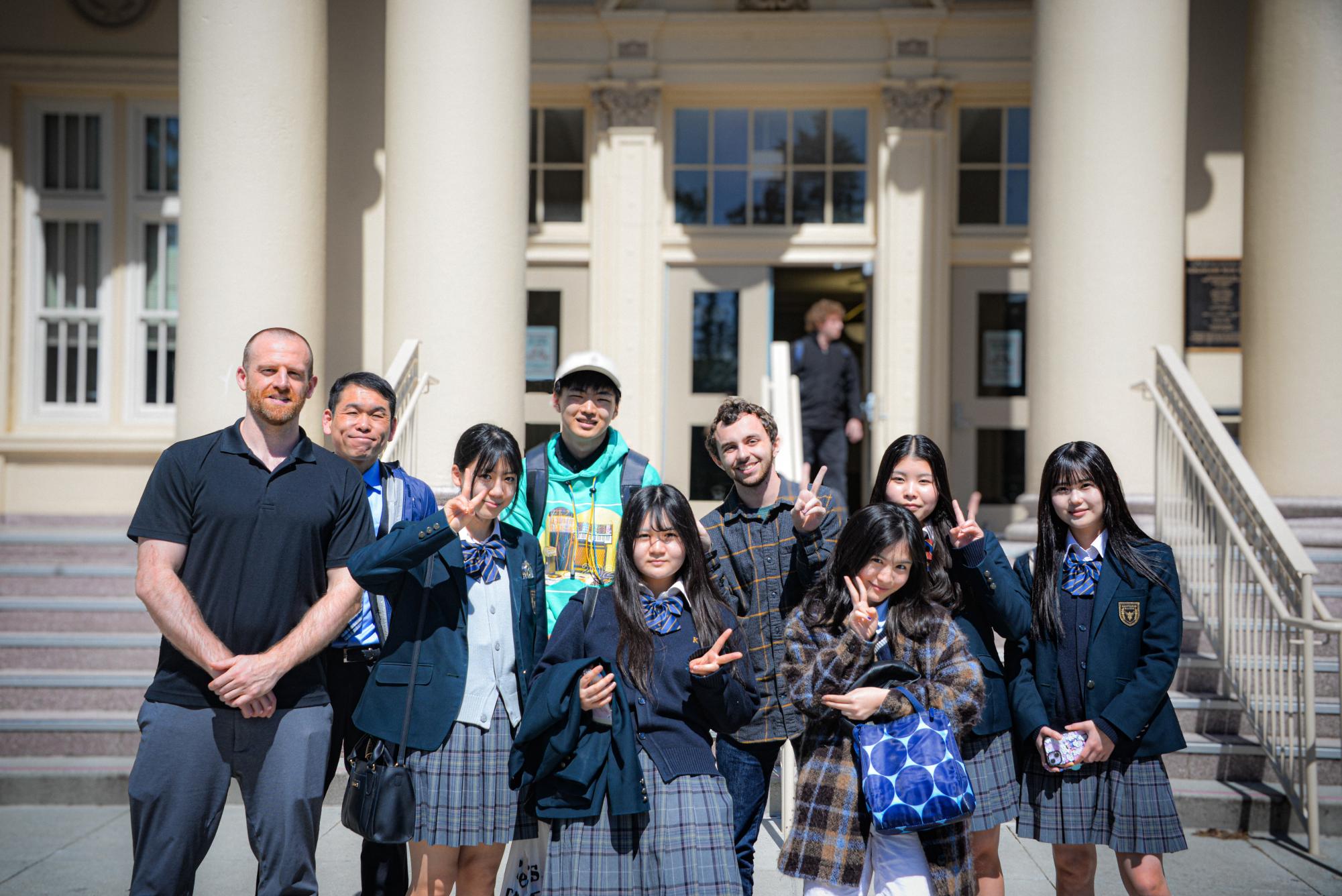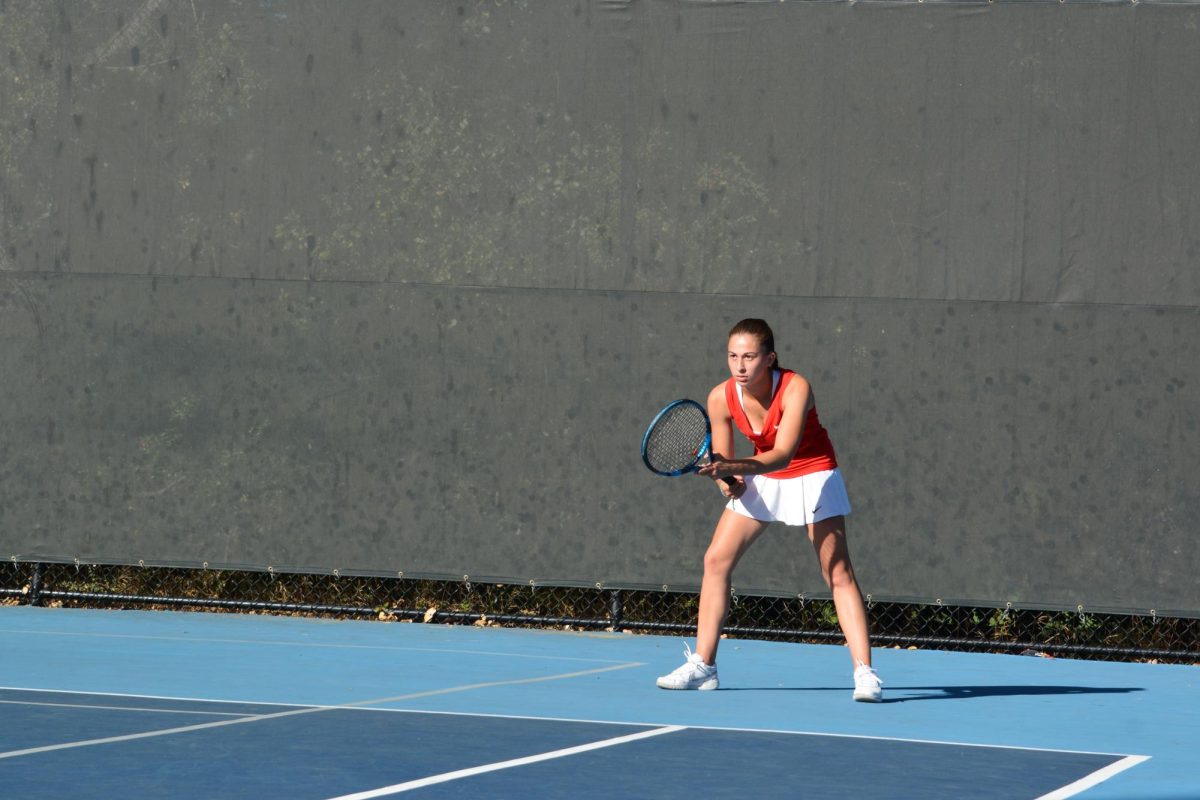Burlingame may not have a Japanese language class, but that didn’t stop the community from hosting five Japanese exchange students on Friday, March 22 and Tuesday, March 26 — four students and two teachers from Kanto Daiichi High School in Tokyo and another student from Fuzoku High School. While student volunteers guided the exchange students at Burlingame, the exchange students resided in the homes of Rotary Club members.
The exchange students explored Burlingame’s diverse elective classes on both days, visiting leadership, Digital Photography, Foods and Nutrition and drama on Friday, and touring Band, Game Design and Art on Tuesday. The exchange students got to cook in the Foods classroom, perform small scenes with the drama class and bond over shared traditions with the Japanese culture club.
Garry Coates, a teacher from Kanto Daiichi High School, hopes that this experience will help the exchange students learn more about American culture.
“It’s more of like a cultural exchange than a language exchange,” Coates said. “They’re coming over and trying to learn as much about American culture as possible. We’re also trying to get them to share some Japanese culture.”
For Kanto Daiichi student Miyu Ume, the most obvious difference in America was the sheer magnitude of everything. She noticed that the streets, cars and schools, specifically in Burlingame, were often larger than those in Japan. In a school setting, this change offered her a sense of openness and freedom.
“It’s very free at the school compared to Japanese school,” Ume said as translated by Coates. “[Japanese school] is not wide with sports fields and stuff.”
Ume noticed that the size change influences the school and student atmosphere.
“Just seeing students walking around you won’t see at a Japanese school,” Ume said, with Coates translating. “[Japanese students] are always in their classroom, and they’re not really allowed to go wander around. [I] was amazed just seeing everyone just strolling around.”
Ume also mentioned several obvious cultural differences. In contrast to Japanese customs, it is common for her host family to wear shoes inside the house. She also enjoyed the free snacks and lunches offered at Burlingame. When they walked around on Burlingame Avenue, Ume enjoyed the America-exclusive items like the Dragon Drink refresher from Starbucks.
Additionally, she observed that schools in Japan often have stricter regulations, like prohibiting students from attending school with makeup or dyed hair. Those confines reflect the Japanese history of instituting
a more conformist society where everyone is encouraged to act and look similarly. That made the independence of American students especially notable for Ume.
“The [American] high school students are all independent and cool,” Ume said.
Ume and Coates also found that Burlingame students were more relaxed compared to Japan. They attributed this to the immense academic pressure and stress Japanese high school students experience.
“The high school students [in Japan] are all really strung out,” Ume said as translated by Coates. “But then everyone here seems really friendly and open.”
Even their sports and activities are stricter than Burlingame’s.
“They’ll do morning training, then they have school, then afternoon training,” Ume said as translated by Coates. “Also everyone in the baseball club has to shave their head, so they’re all bald.”
Overall, both the exchange students and student volunteers enjoyed the visit. For student volunteer and Japanese culture club founder senior Landon Stobaugh, it was a great opportunity to practice his Japanese and learn more about the culture.
“My favorite parts have been hanging out and talking [with the students],” Stobaugh said. “This is actually a very fun opportunity to hang out with all the Japanese people and be able to talk to them face to face.”
Most of the Japanese students enjoyed their stay in America — with Ume not ready to go back.
“I don’t [want] to go back to Japan,” Ume said. “Everyone [here] is so kind, I want to stay in America.”








